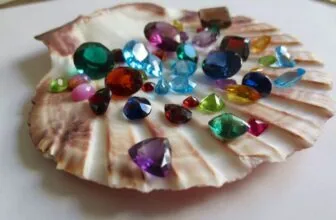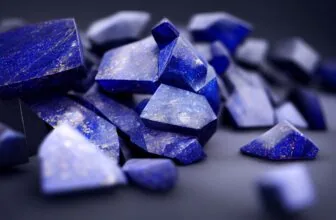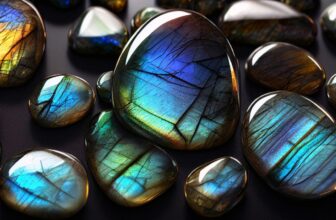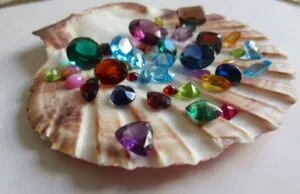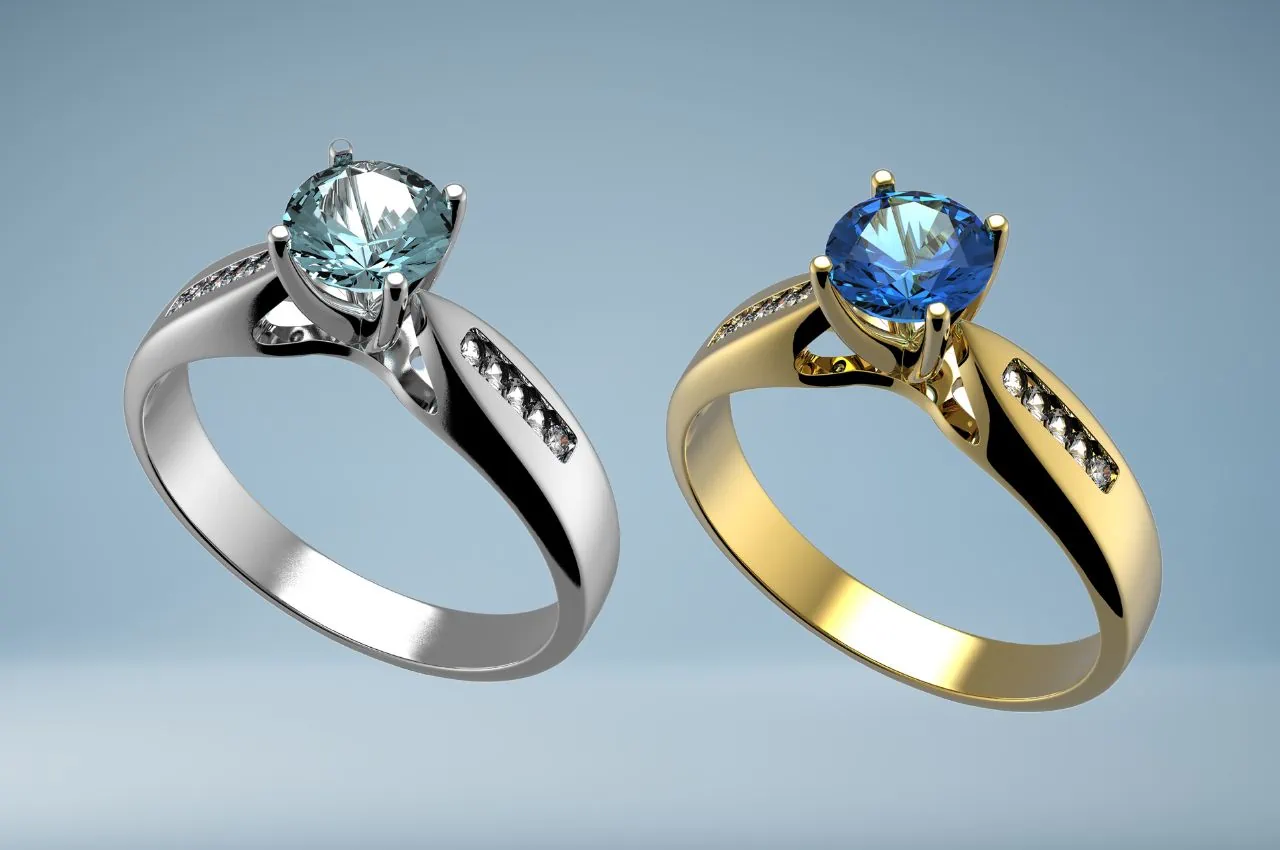
Table of Contents
Blue topaz and aquamarine are so similar in appearance that it’s practically impossible to tell the two apart just by looking at them. In fact, many fraudulent vendors successfully pass off the less valuable blue topaz as aquamarine.
However, apart from the similarity in appearance, the two stones are very different from each other. Let’s take a look at these two gemstones and compare the differences between them.
Blue Topaz vs. Aquamarine: Origin and History
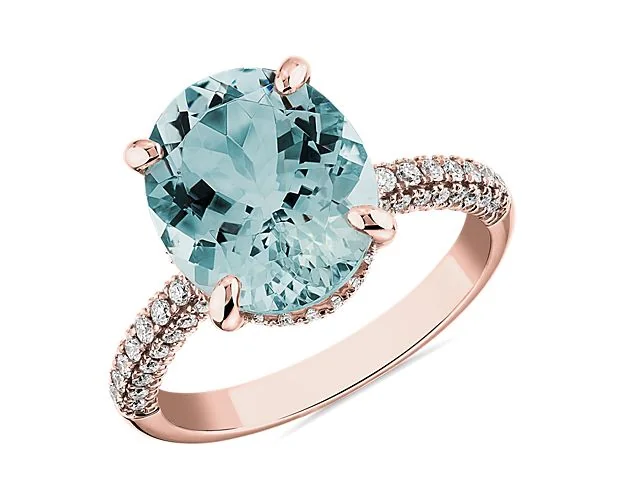
Aquamarine is a member of the illustrious beryl family and is closely related to the popular gemstones emerald and morganite. It’s named after the Latin phrase ‘water of the sea’, no doubt a tribute to its bluish-greenish color. Most of the aquamarine being mined is from Brazil, while Angola, Kenya, Malawi, Russia, Pakistan, and the USA are some other important sources of the gemstone. Aquamarine is quite rare and high-quality and vivid blue stones are even rarer.
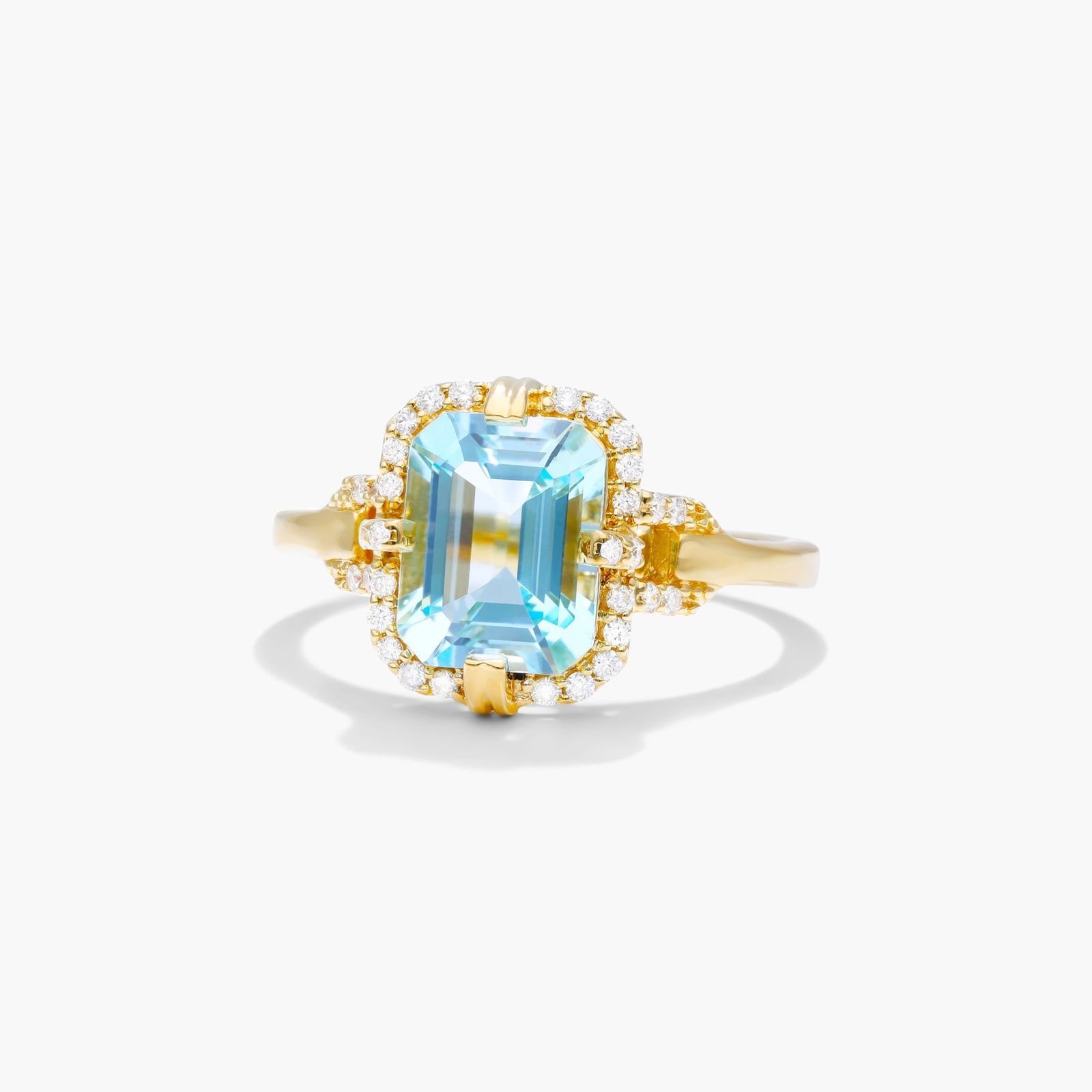
Blue topaz is much more commonly found. There are blue topaz deposits in Brazil, Afghanistan, Sri Lanka, Russia, Zimbabwe, and the USA, among others. Topaz is believed to be named after the Sanskrit word for ‘fire’ tapas as yellow topaz is the most commonly found variety of this stone.
Aquamarine is the birthstone for March-born babies while blue topaz is commonly used as a December birthstone. Both these gemstones have been used in jewelry for centuries and have been valued for their sparkling hues.
Blue Topaz vs. Aquamarine: Color
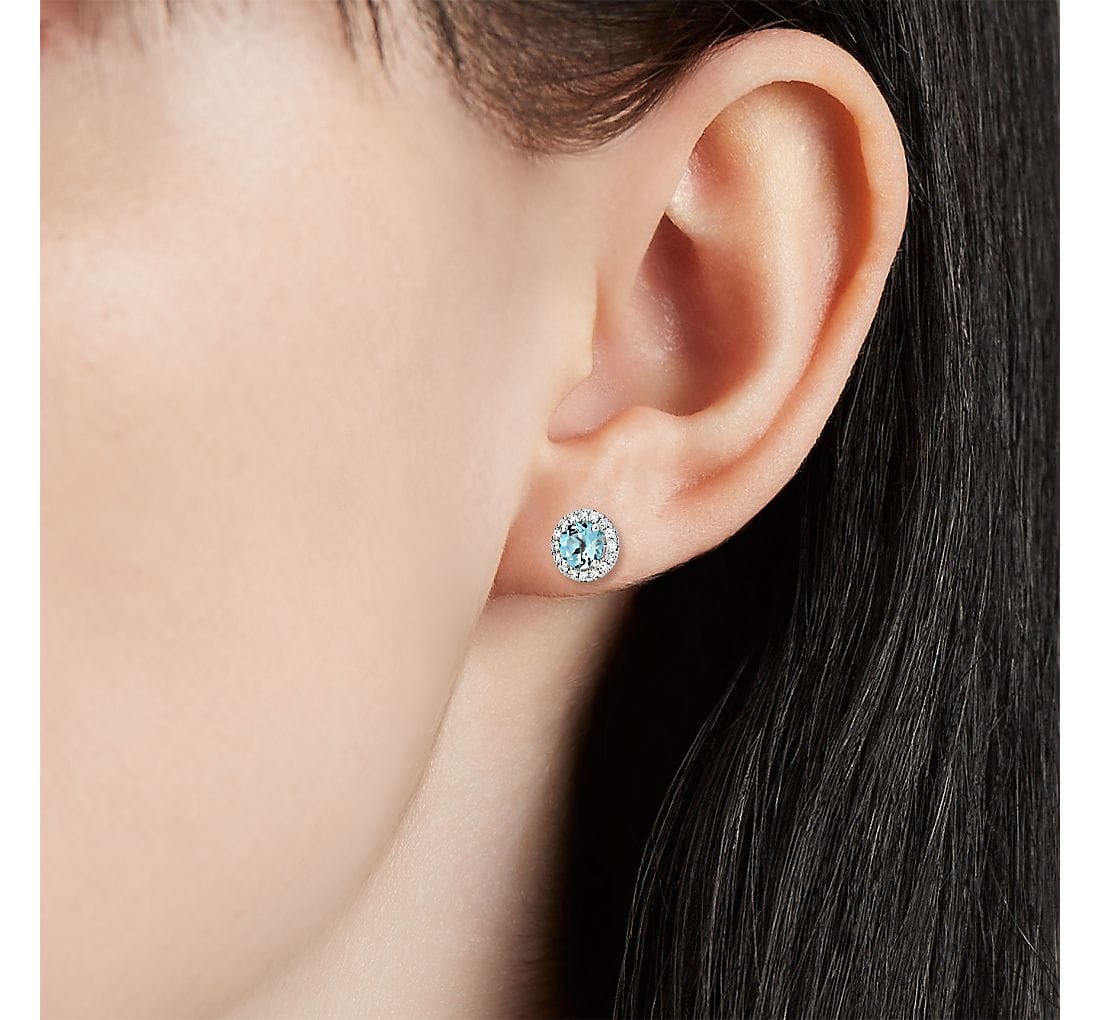
Aquamarine is found in a range of shades from blue to bluish-green but not in any other color.
Although the mineral beryl is found in other colors, they have their own names such as emerald for green and morganite for pink. Anything from a light-blue green to a dark-blue color is desirable, although aquamarines with deep saturation and a strong color are the most coveted.

Although topaz is found in a range of colors, with colorless topaz being the most commonly found variety in nature, blue topaz is among the most desirable. Blue topaz comes in a variety of blue shades, from faint to deep and vivid blues. Because blue topaz looks so similar to aquamarine, even experts may find it difficult to tell the two apart simply by looking at it. Often, testing is required to distinguish aquamarine and blue topaz.
Blue Topaz vs. Aquamarine: Durability
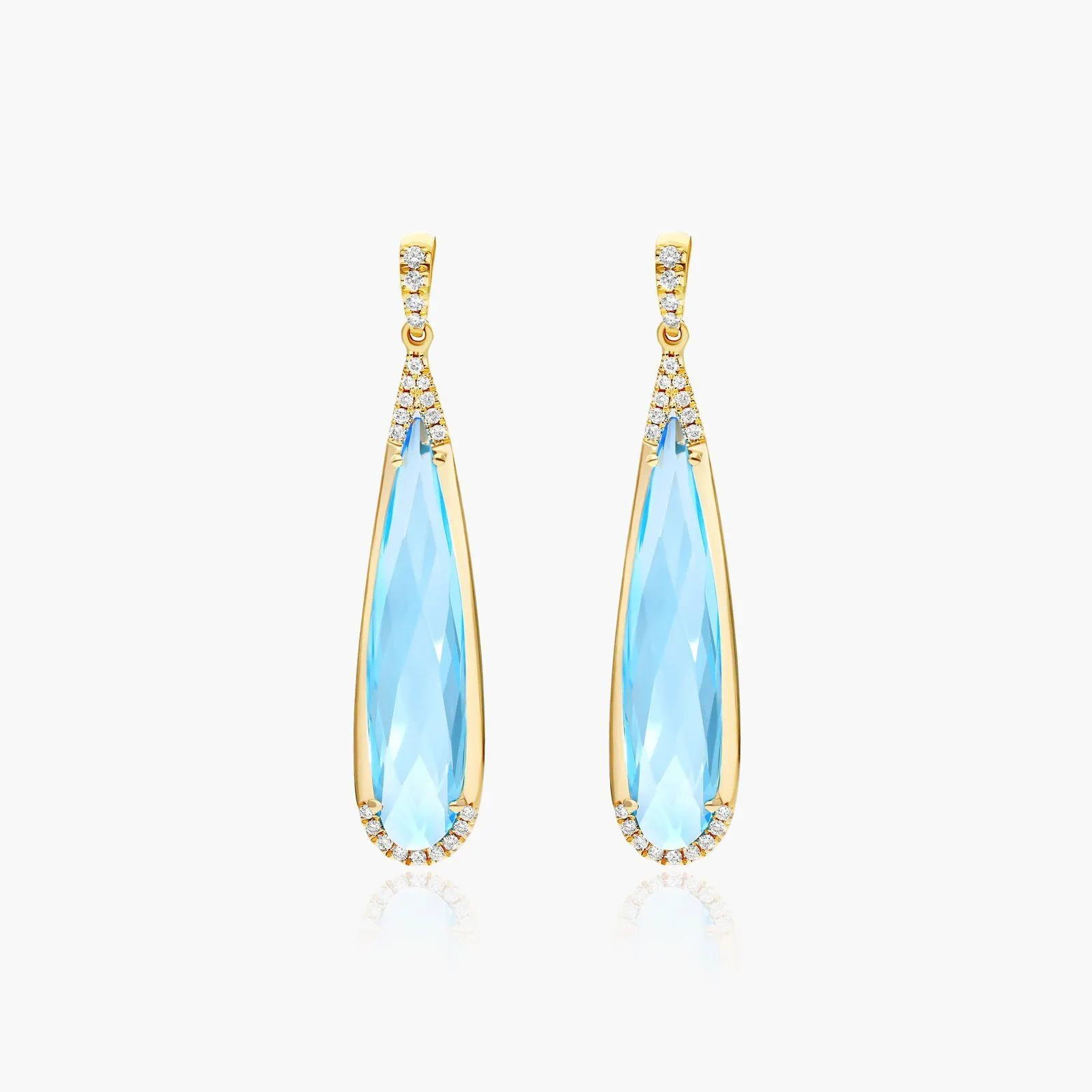
Blue topaz ranks at 8 on the Mohs scale while aquamarine ranks at 7.5 to 8. Both stones are quite hard and are suited for regular wear.
However, blue topaz has cleavage, which refers to a gemstone’s tendency to crack or break when struck. Due to this feature, it’s not very tough and is, therefore, more prone to damage than an aquamarine.
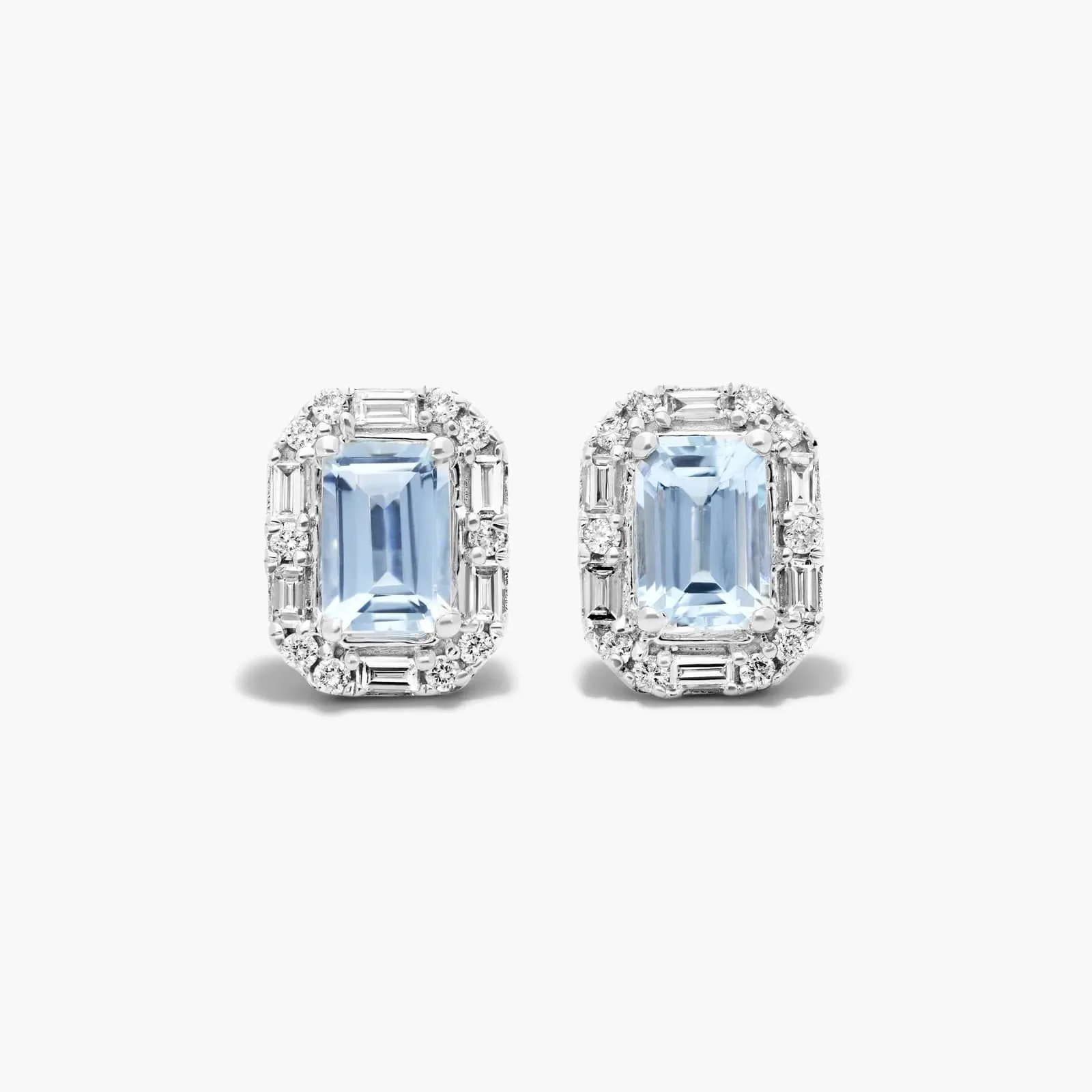
While aquamarine has very good toughness, it can develop internal cracks if exposed to hard blows. Also, aquamarines don’t handle heat well and can fade if exposed to heat sources. Some aquamarines tend to fade over time, but this is not common.
Maintaining and taking care of both stones is important to prolong their life. If you’re choosing a blue topaz or aquamarine engagement ring, ensure that it’s set in a protective setting, such as a bezel, flush, or halo setting.
Blue Topaz vs. Aquamarine: Clarity
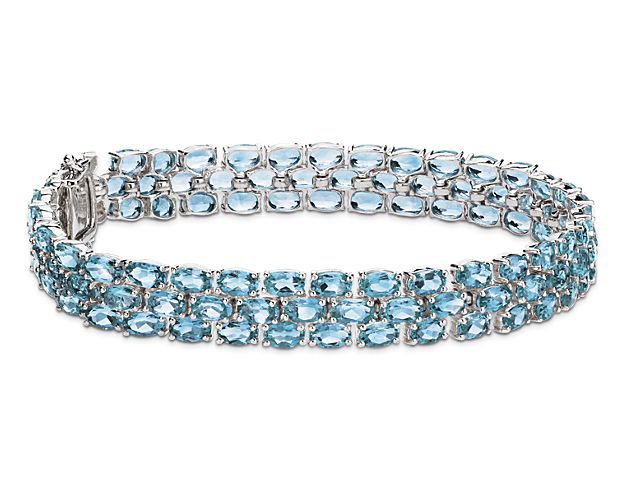
Blue topaz and aquamarine are both popular gemstones known for their beautiful shades of blue. However, when it comes to clarity, there are distinct differences between the two. Blue topaz, which can range from light to deep blue, is often available in eye-clean specimens, meaning that inclusions (internal or external flaws) are rarely visible to the naked eye. The clarity of blue topaz is often one of its defining features, making it a popular choice for jewelry where the purity and intensity of color are paramount.
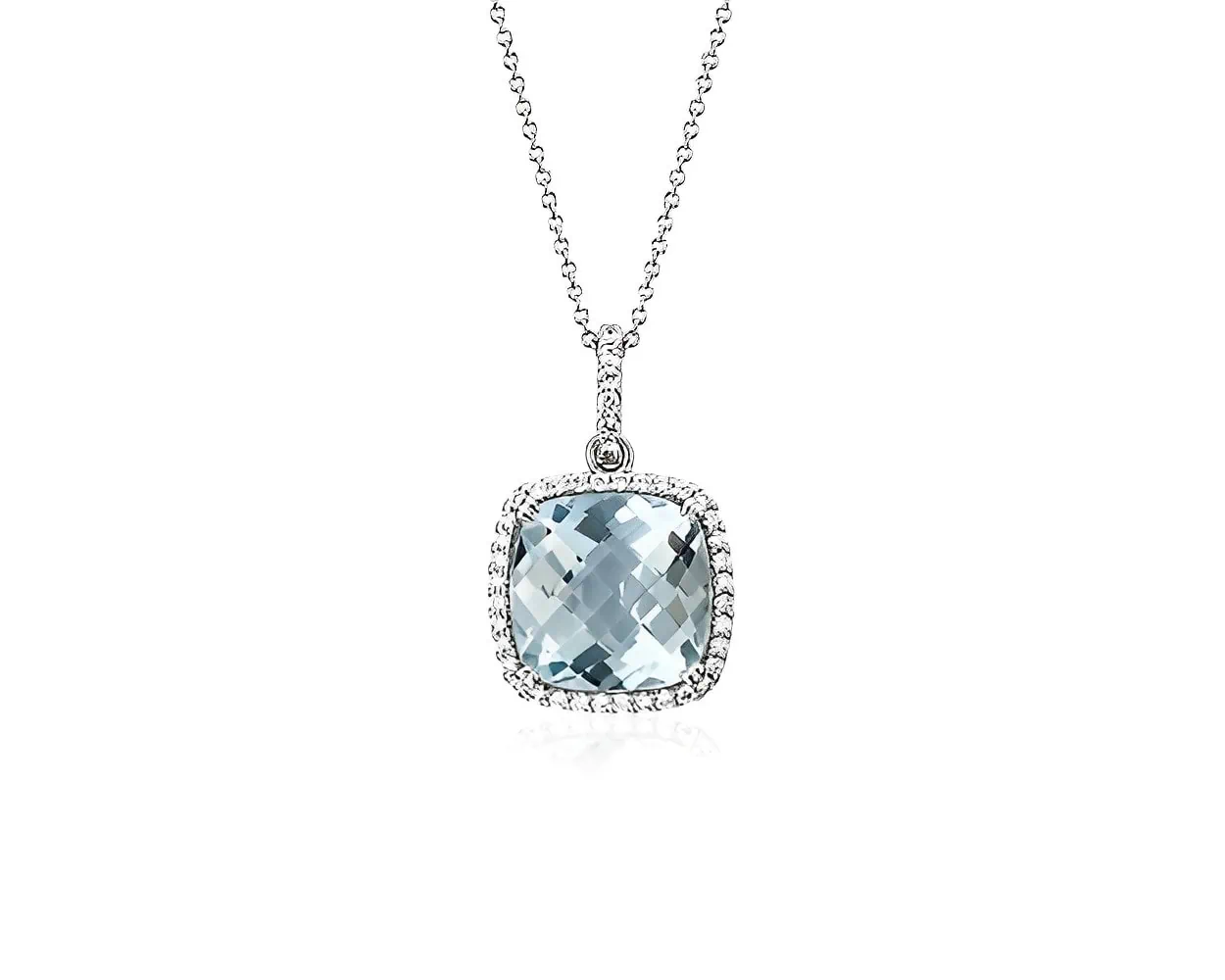
Aquamarine, on the other hand, belongs to the beryl family of minerals, which also includes emeralds. While it is prized for its serene light blue to greenish-blue color, reminiscent of seawater, aquamarines often contain more inclusions compared to blue topaz. These inclusions can sometimes be visible to the naked eye.
However, high-quality aquamarines that are mostly free of inclusions are highly sought after and can command significant prices. That said, some inclusions, like those that produce a star or cat’s eye effect in the gem, can enhance the stone’s value and appeal.
While both blue topaz and aquamarine are cherished for their unique blue hues, blue topaz typically boasts clearer specimens with fewer visible inclusions, whereas aquamarine, although often containing more inclusions, possesses a delicate hue and charm that’s been celebrated for centuries.
Blue Topaz vs. Aquamarine: Luster and Shine
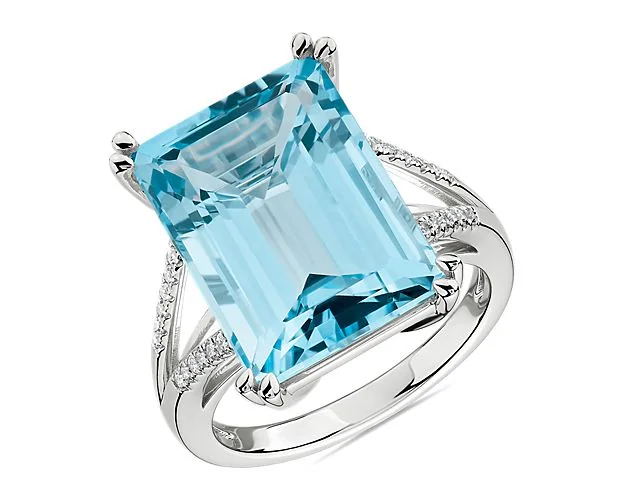
Blue topaz and aquamarine, while both alluring in their blue hues, exhibit differing luster and shine due to their inherent crystal structures and mineral compositions. Luster describes the way light interacts with the surface of a mineral, and for gemstones, this quality plays a significant role in their visual appeal.
Blue topaz typically exhibits a vitreous luster, which means it has a glass-like shine. The clarity and inherent brilliance of blue topaz accentuate this luster, making the gemstone appear exceptionally radiant when cut and polished. Its refractive properties, combined with its clarity, can give blue topaz a dazzling sparkle, especially when faceted.
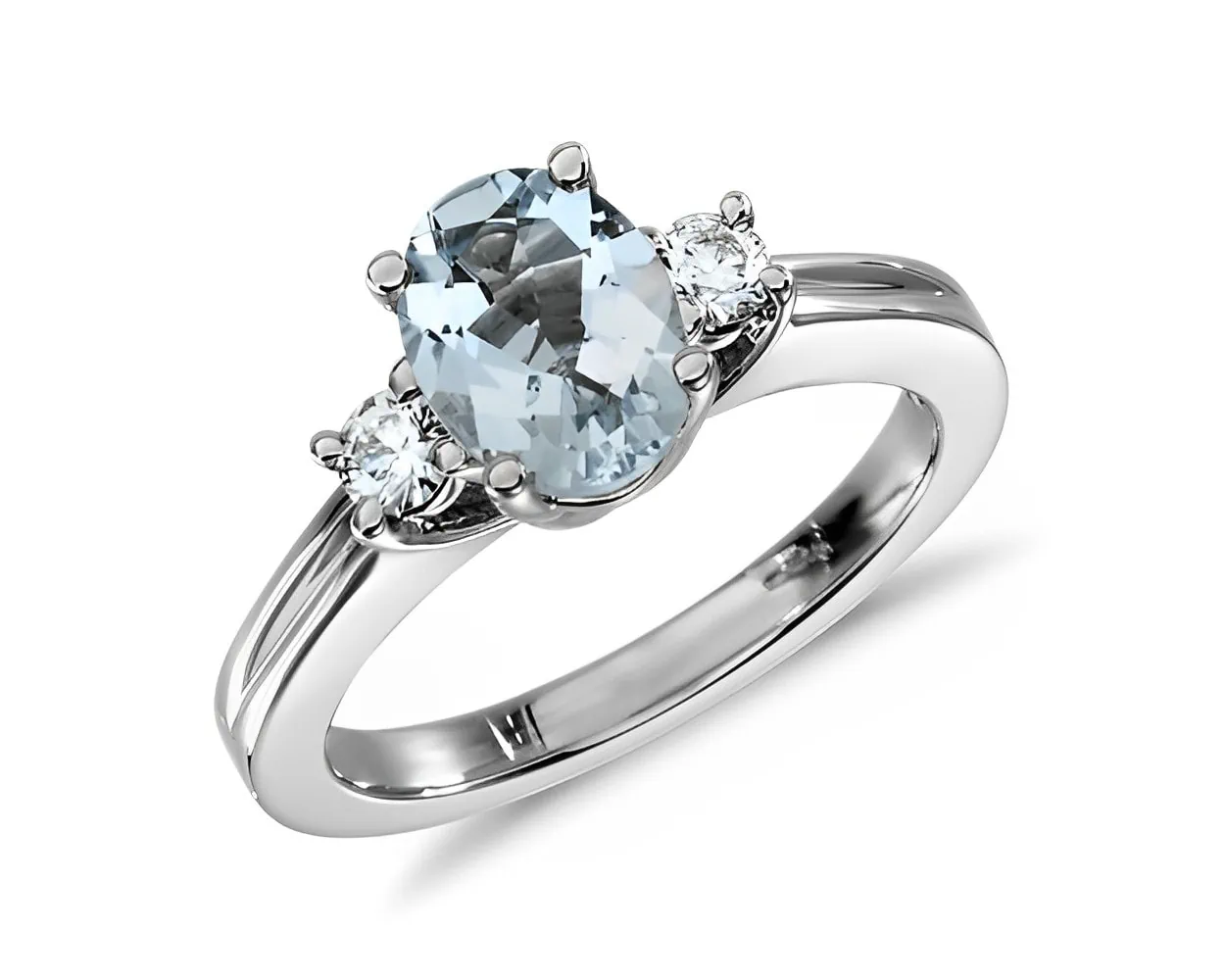
Aquamarine, a blue variety of beryl, also possesses a vitreous luster but tends to have a slightly softer and more muted shine compared to blue topaz. While it can gleam beautifully in the light, its shine is often described as more serene or subtle.
The presence of any inclusions can further diffuse the light, softening the overall luster. However, the delicate and calming blue-green hue of aquamarine paired with its luster can evoke images of tranquil seawaters, giving it a distinct aesthetic appeal.
Blue Topaz vs. Aquamarine: Metaphysical Properties
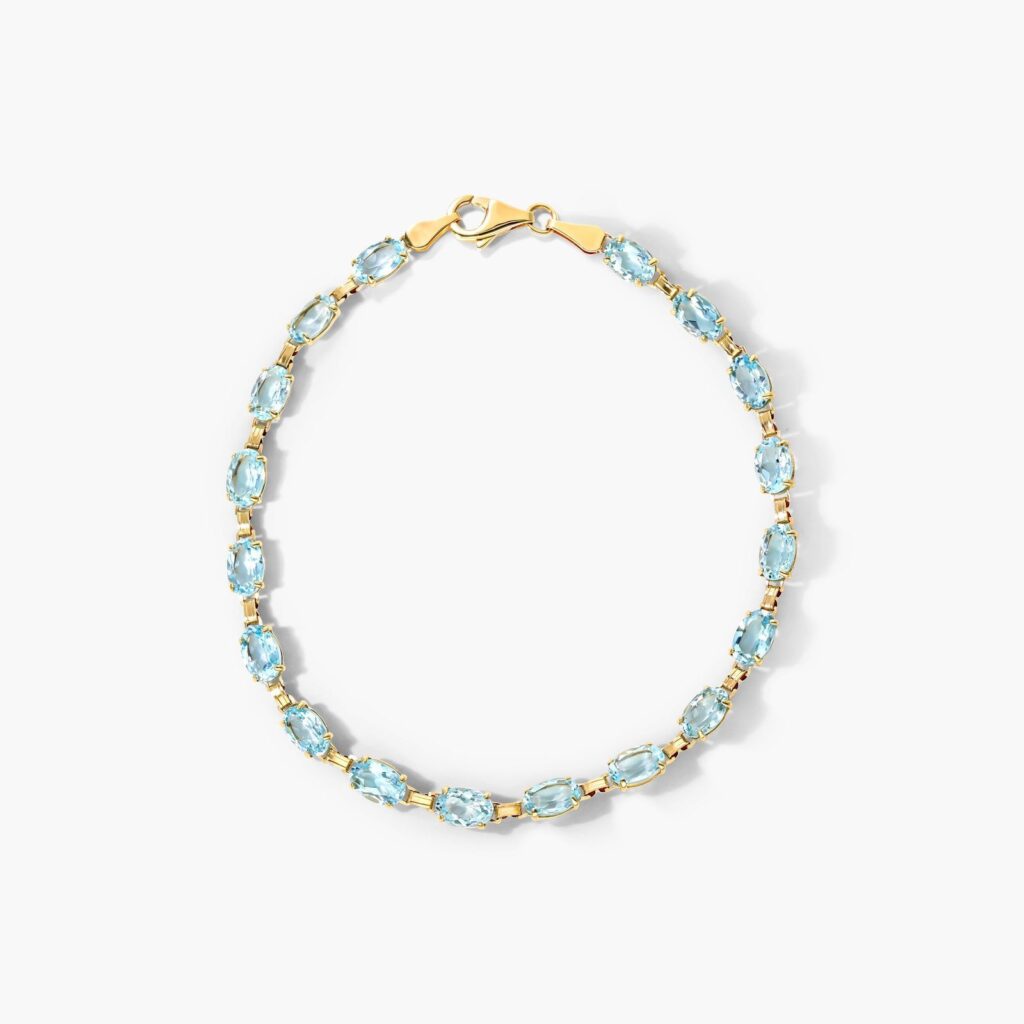
Blue topaz and aquamarine, beyond their physical allure, are believed to possess unique metaphysical properties that resonate with many individuals. Blue topaz is often associated with clarity, communication, and inspiration.
Many practitioners of crystal healing believe that it can aid in clear thought, improve one’s ability to express oneself, and inspire creativity. This gemstone is also said to help in meditation by calming the mind, making it easier to access inner wisdom and insights.
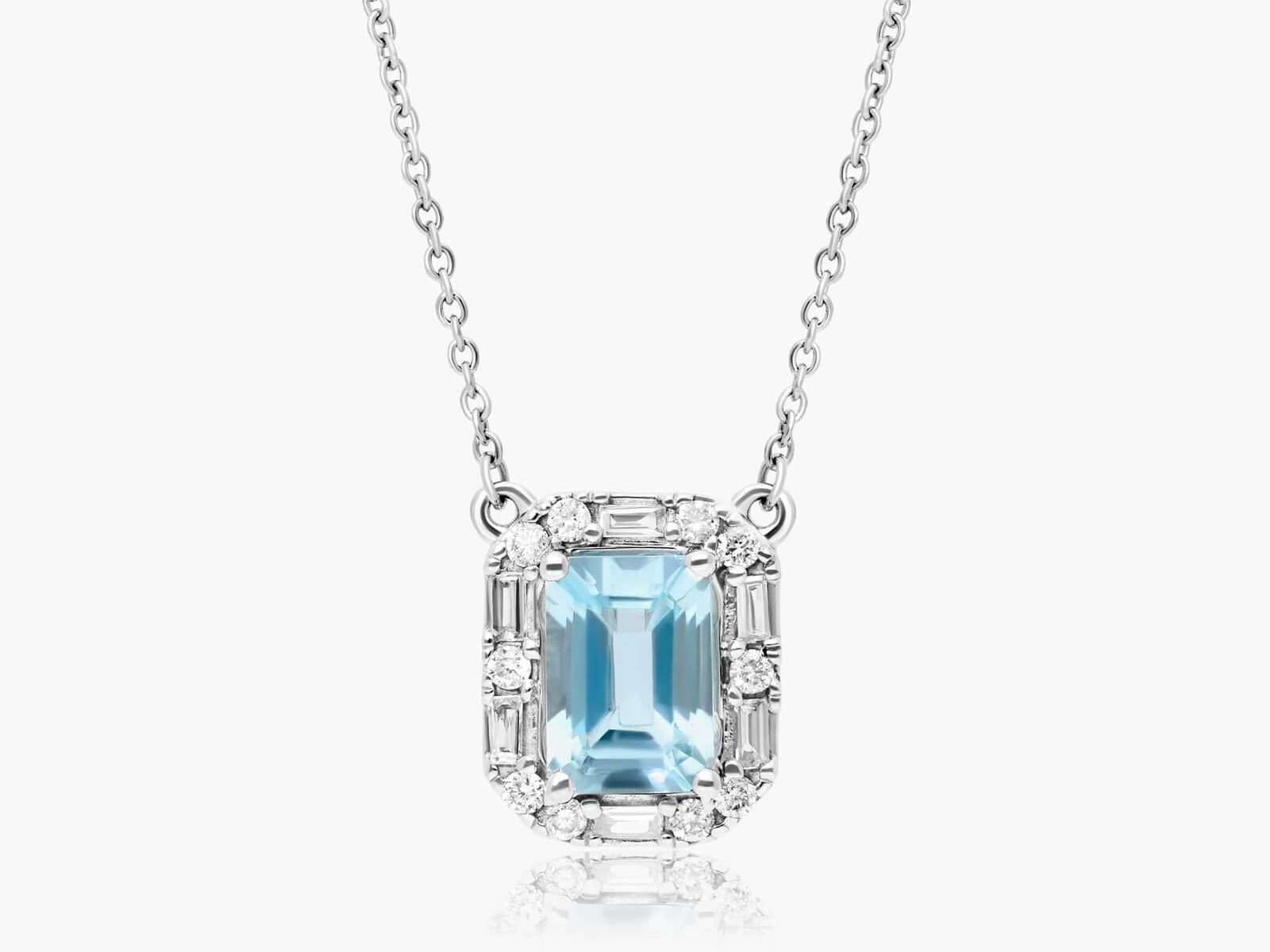
Aquamarine, with its serene oceanic hue, is often considered a stone of courage and protection. Metaphysically, it’s believed to soothe fears and encourage a sense of tranquility. Linked with the throat chakra, aquamarine is also said to assist with clear communication, especially in helping one speak their truth with compassion and clarity. Its connection to the sea also makes it a talisman for sailors, promising safe passage across tumultuous waters.
In essence, while blue topaz emphasizes clarity and inspiration, aquamarine underscores courage, protection, and tranquil communication.
Blue Topaz vs. Aquamarine: Usage in Jewelry
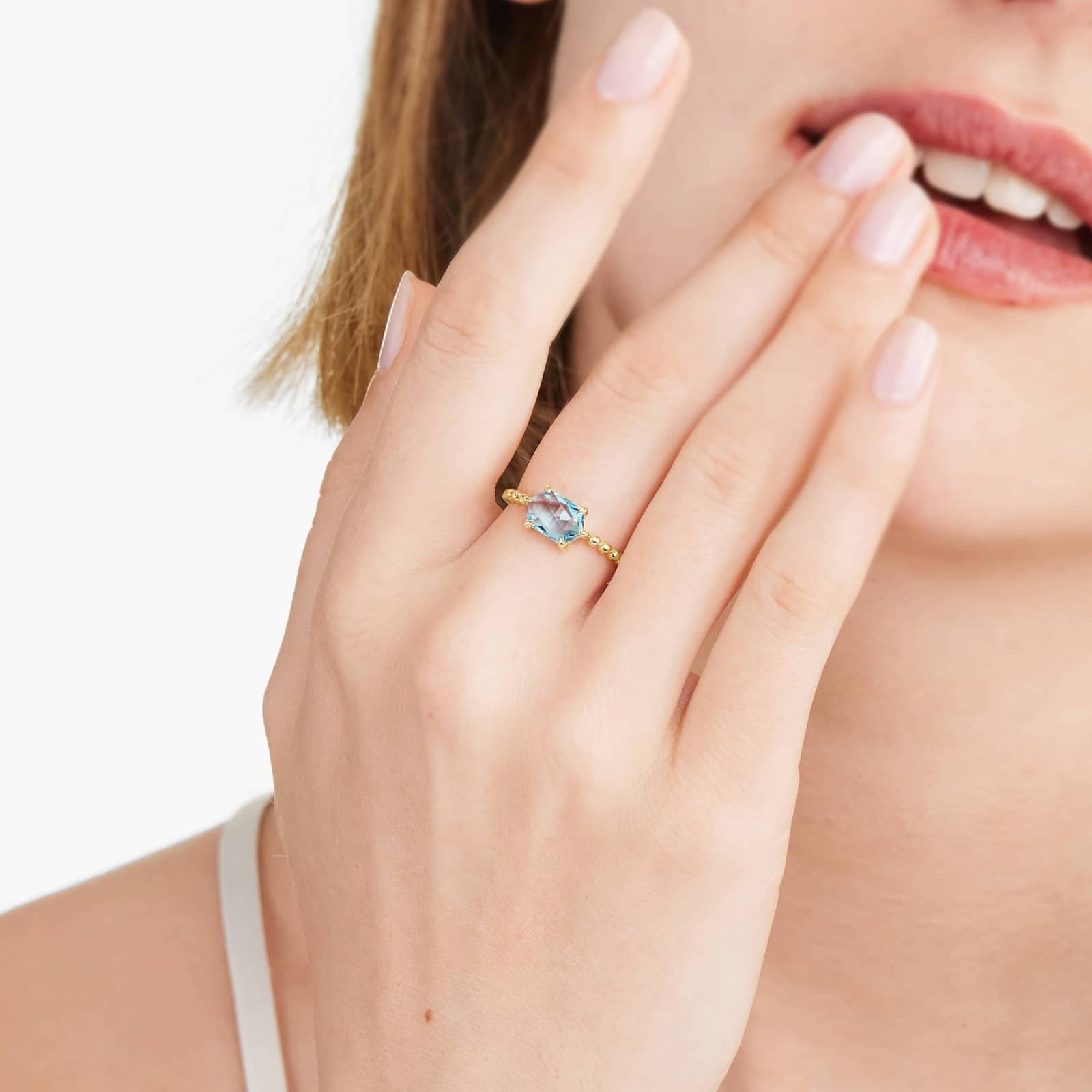
Blue topaz, with its vibrant shades ranging from pale sky blue to a deep, almost electric blue, is often sought for its ability to capture and reflect light brilliantly. This gemstone has historically been associated with love and affection, making it a popular choice for romantic gifts such as engagement rings or anniversary presents.
Blue topaz’s affordability in comparison to other gemstones has made it a preferred stone for larger statement pieces, such as pendants and cocktail rings.

On the other hand, aquamarine, deriving its name from the Latin words for “water” and “sea,” evokes the serenity of the ocean with its gentle, pale blue to greenish-blue hue. This gemstone is closely tied to the lore of the sea, having been considered a talisman for sailors and a symbol of hope, courage, and health.
It’s often utilized in jewelry that embodies grace and elegance, making it a popular choice for pieces like dainty necklaces or heirloom-quality rings. Its association with the month of March as its birthstone further elevates its significance for those born in this month.
While both these gemstones are treasured for their captivating blue tones, they hold unique places in the jewelry industry, distinguished by their individual stories, color intensities, and symbolic connotations.
Blue Topaz vs. Aquamarine: Treatments
Both blue topaz and aquamarine are often treated and enhanced to achieve more desirable shades of blue. However, in many cases, topaz is treated to turn it blue whereas aquamarine is naturally blue.
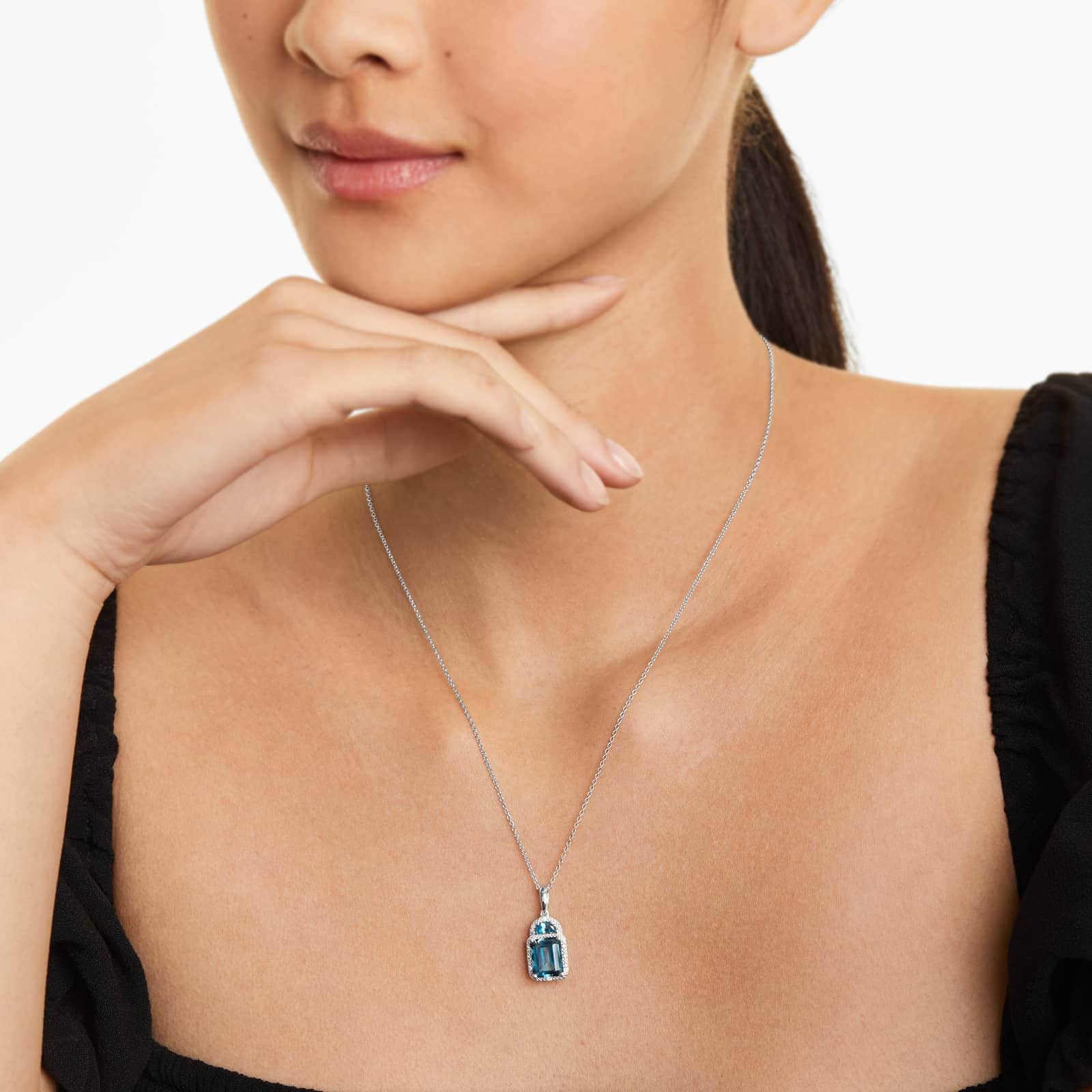
Blue topaz is commonly treated to achieve its strong shades of sparkling blue. In nature, blue topaz is generally pale and watery in color. To acquire the desired strong blue tones, colorless (white) topaz is heat treated. A large proportion of the blue topaz found on the market is actually heat-treated white topaz.
Most aquamarines found in nature contain a greenish-bluish color. However, because blue is the more popular color, these stones are generally heat treated to achieve the blue that customers demand. This does not diminish the value of the stone much, but it’s essential that your vendor disclose such information.
Blue Topaz vs. Aquamarine: Price
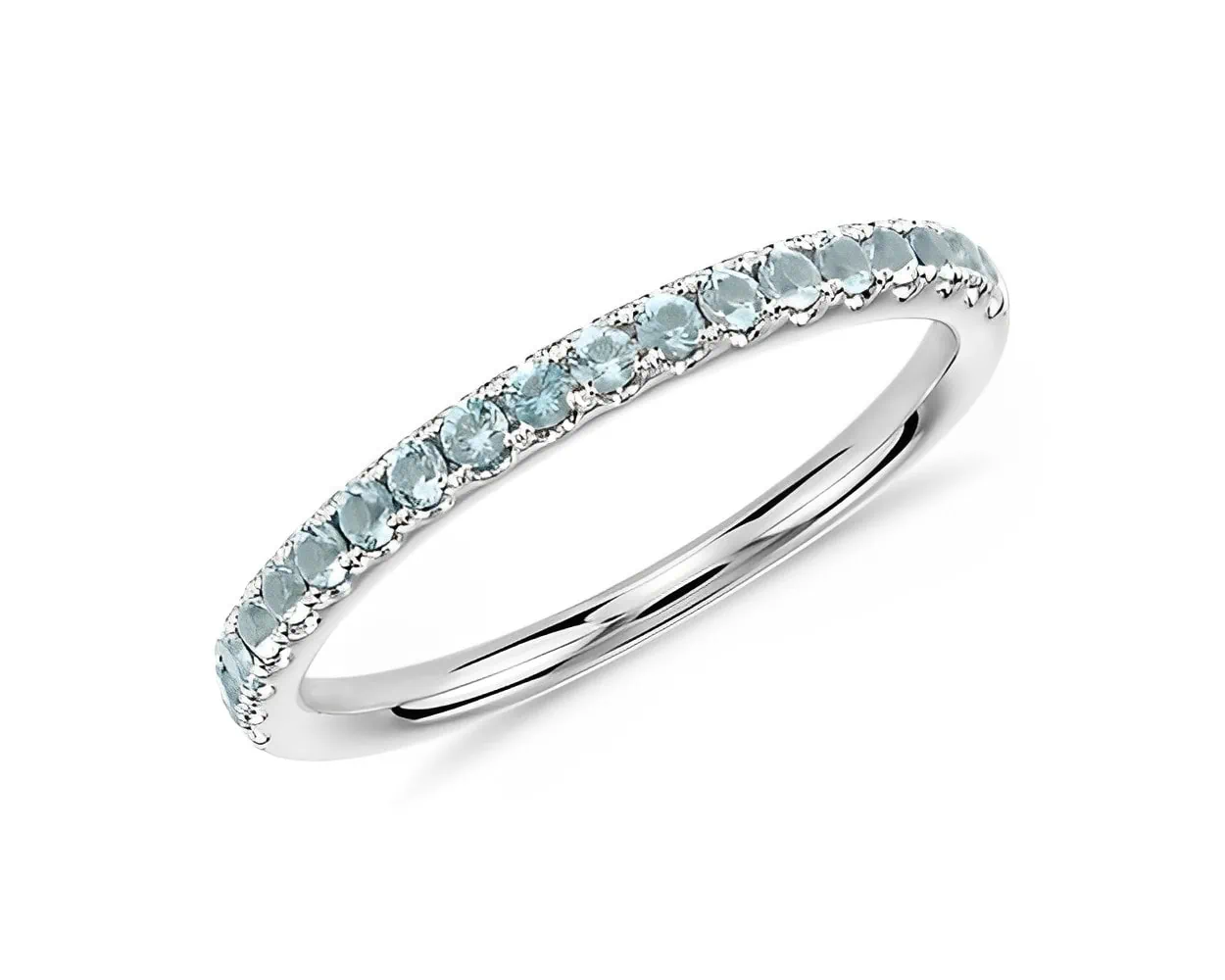
Aquamarine is generally much more expensive than blue topaz, with the main reason being that blue topaz is artificially heated whereas aquamarine is natural in color. This makes a big difference for some buyers.
Compare this aquamarine ring with this similar blue topaz ring. Both are surrounded by diamonds and are similar in size with similar workmanship. However, the aquamarine ring is almost double the price of the blue topaz ring.
Now compare this pair of blue topaz studs with this pair of aquamarine studs. Both of these earring sets are identical in design, shape, and size. This time, however, they have identical price tags as well. So while we generalize that aquamarine is more expensive, it all comes down to the piece of jewelry and the workmanship that goes into it.
As a general rule of thumb, though, if you are simply after a beautiful blue stone, then blue topaz is less expensive and just as good as aquamarine. Rather than shell out more money for an aquamarine, it’s a practical decision to opt for blue topaz.
Blue Topaz vs. Aquamarine: Care & Maintenance
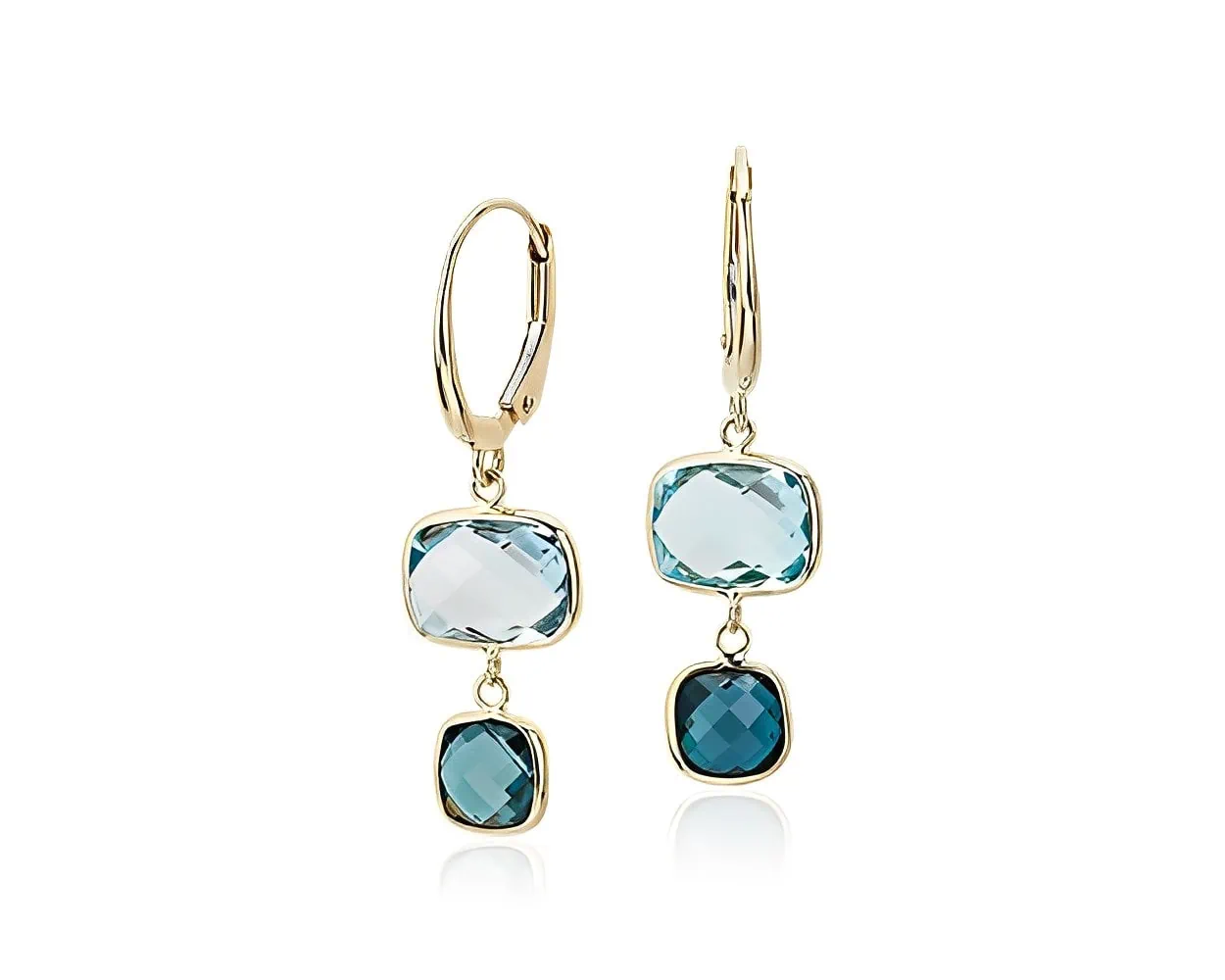
Blue topaz and aquamarine are both beautiful gemstones, but their care and maintenance differ slightly due to their unique properties.
Blue topaz, which is harder on the Mohs scale than aquamarine, is more resistant to scratches. However, it’s susceptible to damage if exposed to sharp blows or sudden temperature changes. Prolonged exposure to direct sunlight or heat can cause blue topaz to fade or change color.
When cleaning blue topaz, it’s recommended to use warm soapy water and a soft brush. While ultrasonic cleaners are generally safe for blue topaz, steam cleaners should be avoided.
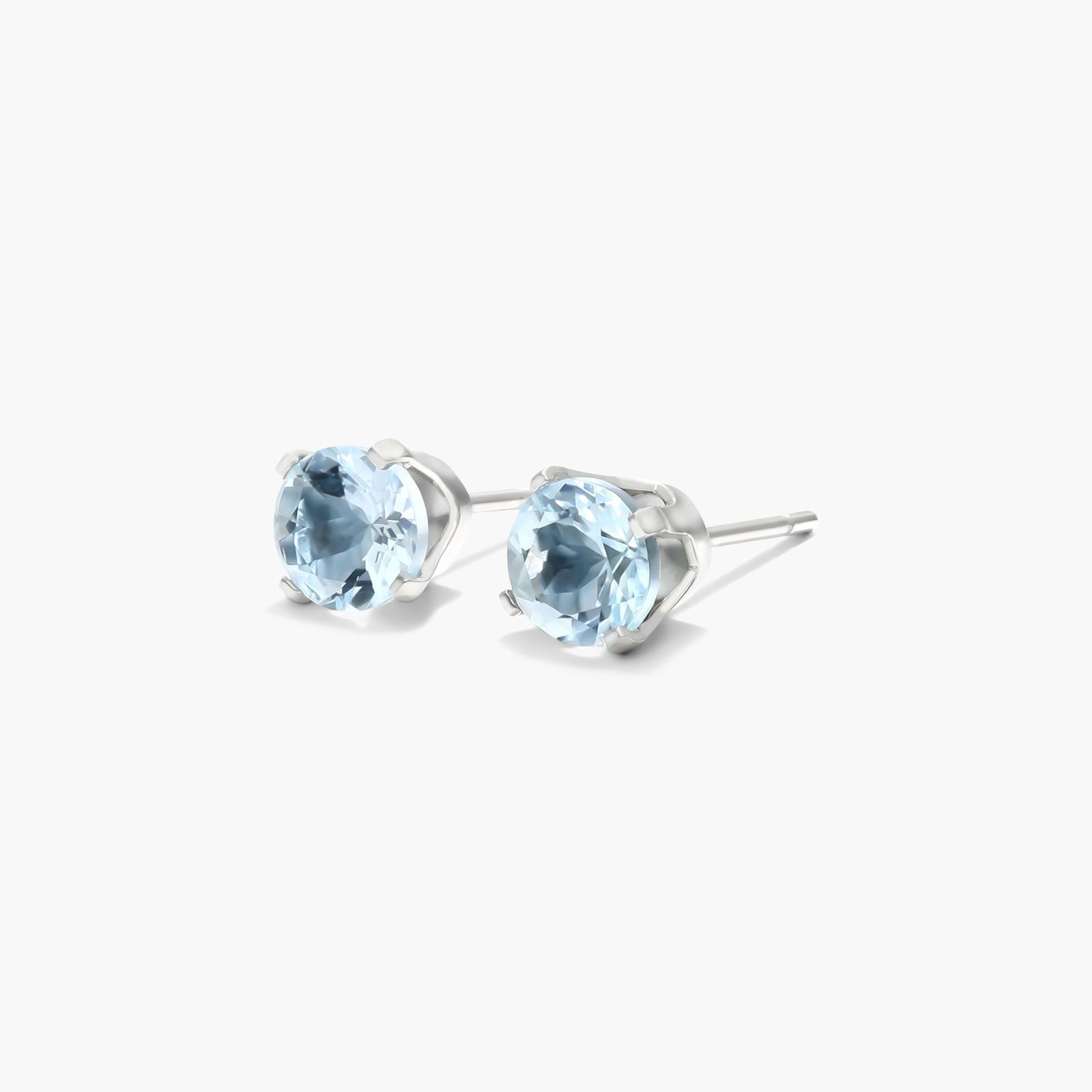
Aquamarine, being a beryl mineral, is softer than blue topaz and can be more prone to scratches. Therefore, it’s advisable to store aquamarine jewelry separately or in a soft pouch to prevent potential damage. Like blue topaz, aquamarine should also be protected from prolonged exposure to heat and direct sunlight, as this can alter its color.
For cleaning, warm soapy water and gentle brushing with a soft brush work well. Aquamarine can also be placed in an ultrasonic cleaner, but, similar to blue topaz, using steam cleaners is not recommended.
While both gemstones require careful handling and regular cleaning, blue topaz is slightly harder and more resistant to scratches than aquamarine. Both stones should be shielded from extreme conditions, and the use of warm soapy water for cleaning is ideal for both.
Blue Topaz vs. Aquamarine: How to Tell Them Apart
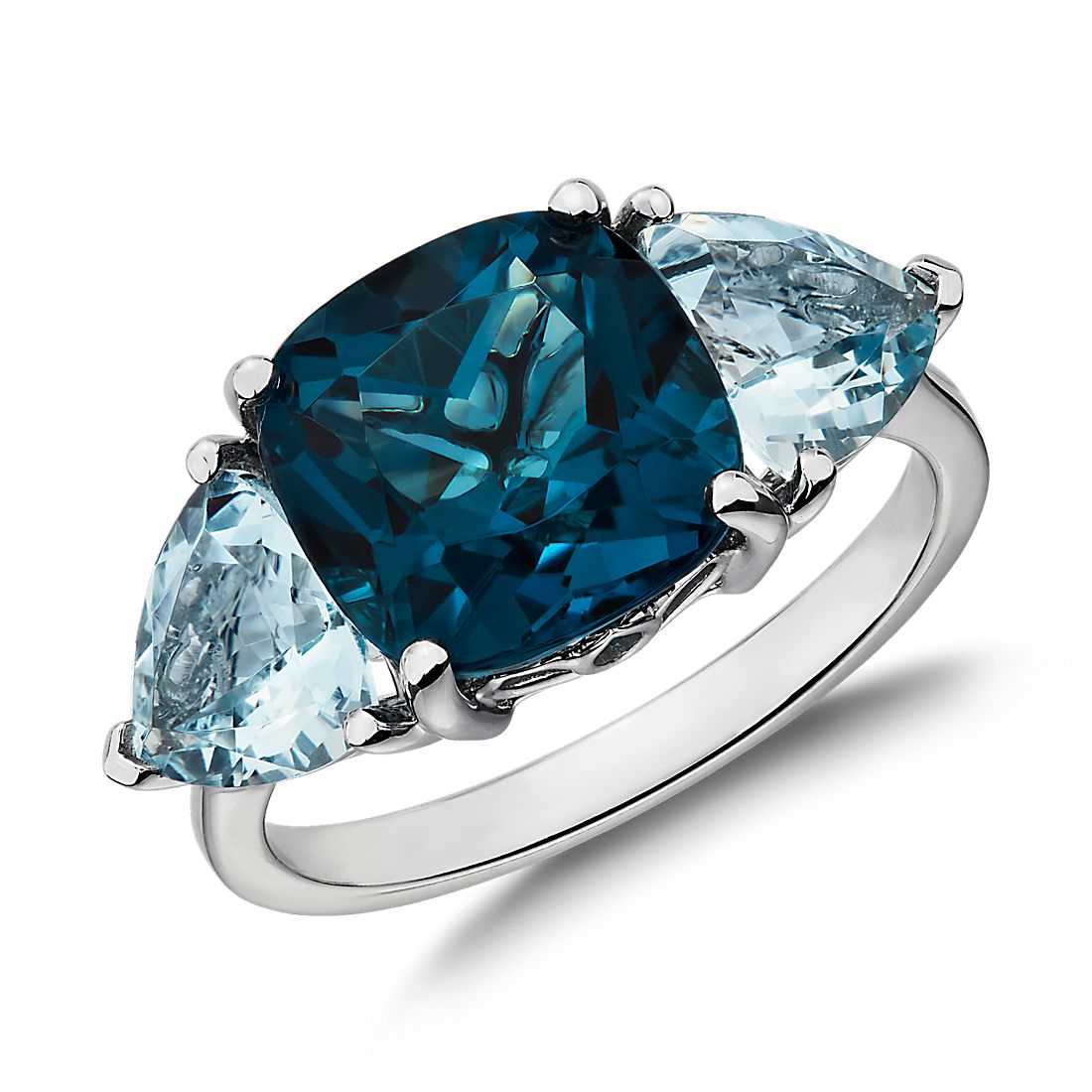
Finally, you might be wondering whether the blue gemstone you have is an aquamarine or blue topaz.
To be absolutely certain, it’s best to take your stone to a licensed gemologist. However, there are some small tell-tale signs that distinguish these two which you can identify at home with basic tools.
1. The Inclusion Check
Using a jeweler’s loupe or a powerful magnifying glass, inspect the stone for any visible impurities. Blue topaz generally has more inclusions than aquamarine. Most aquamarines on the market have very good clarity. If you see flaws, scratches, and other nicks, it’s likely that you have a topaz.
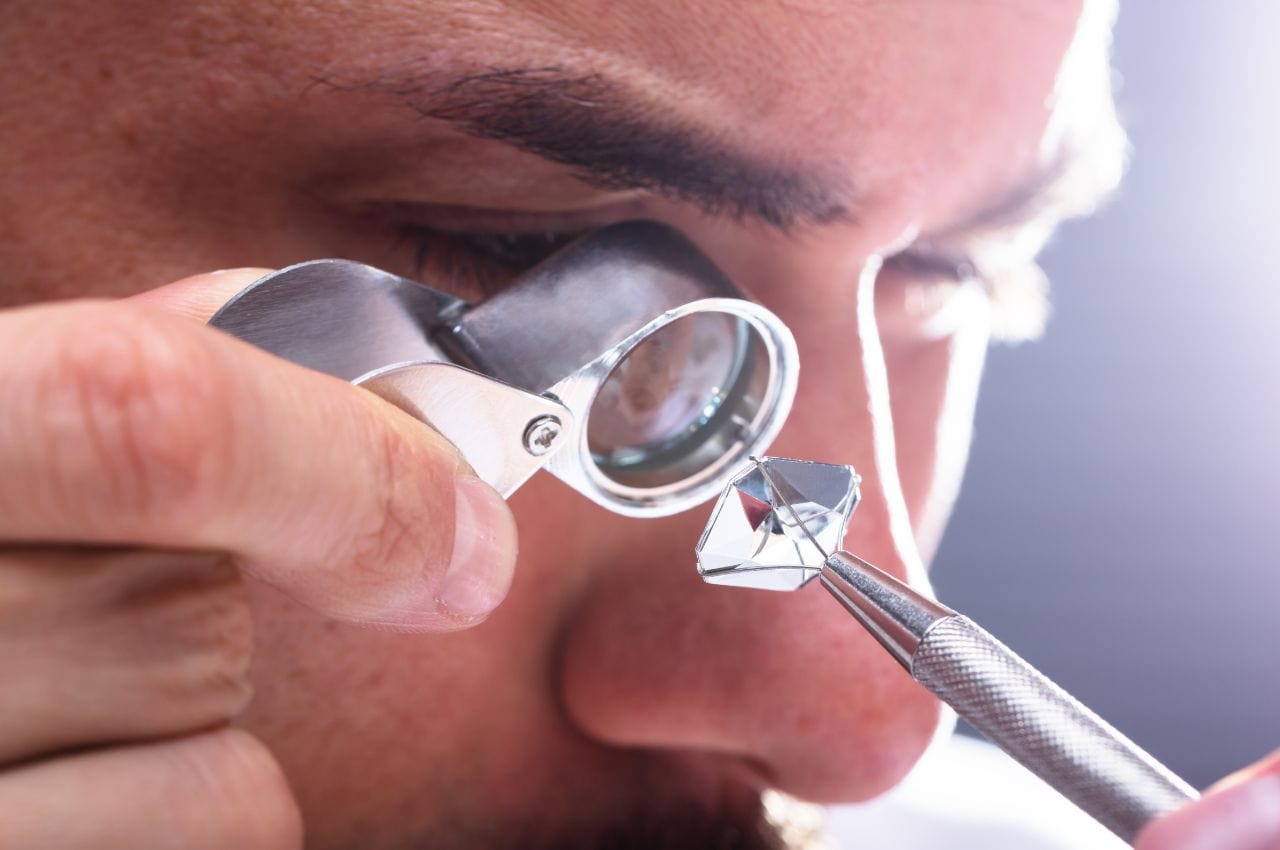
2. The Color Check
Use the jeweler’s loupe to check out the color of the stone carefully. If it’s an aquamarine, you will see greenish tones as well as the dominant blue tones. A blue topaz will only contain a blue tone as it’s artificially colored.
3. The Birefringence Check
Blue topaz shows stronger refraction lines than aquamarine. Hold up your stone close to your eye, or even better, use the jeweler’s loupe. If you can easily see two clear refraction lines in the stone, it’s a topaz. This birefringence is almost impossible to see in an aquamarine.
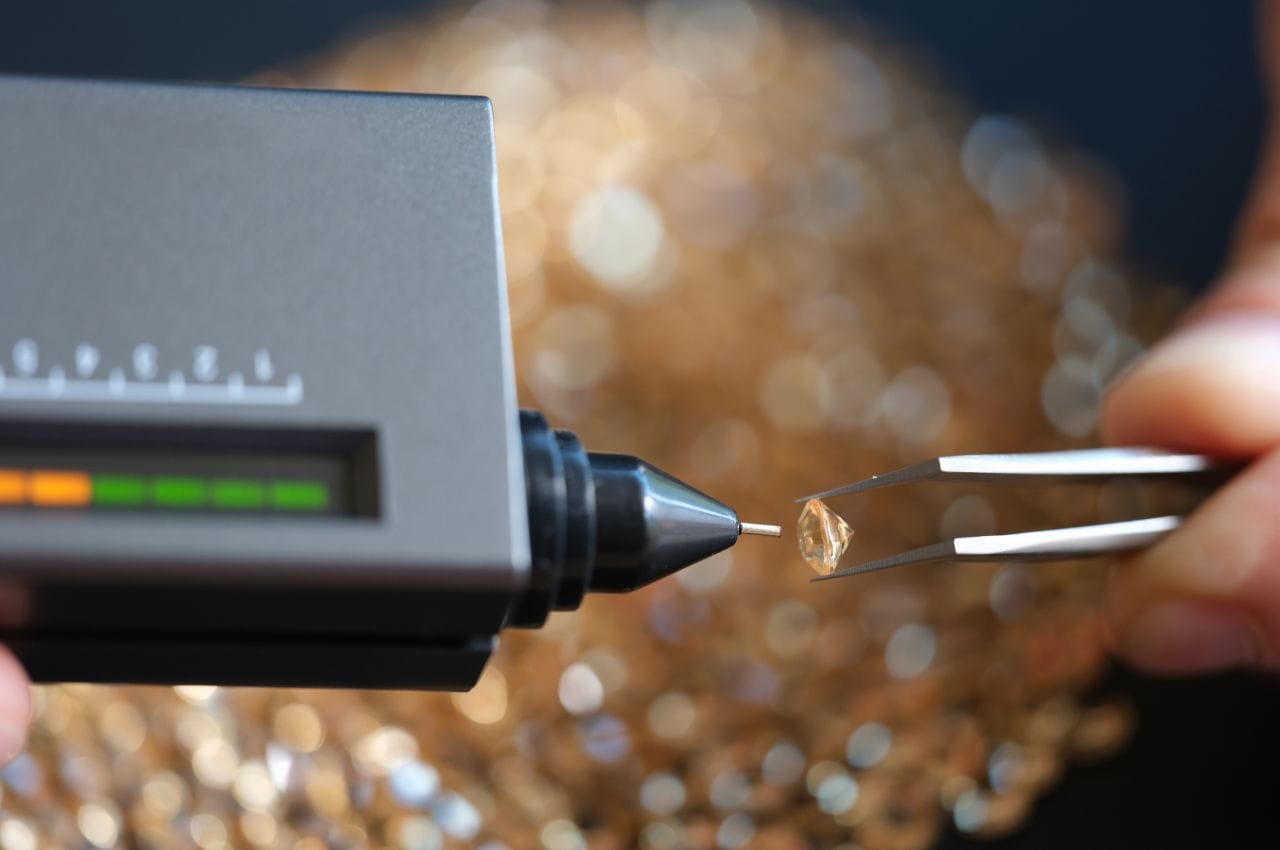
4. Diamond Tester Thermal Test
If you can find a diamond tester, which works with thermal conductivity, you can test to see if your stone conducts heat. Blue topaz, and all beryl gemstones, is a conductor whereas aquamarine is not. If the stone conducts heat, you know for sure it’s a blue topaz.
Which Stone Should I Choose?
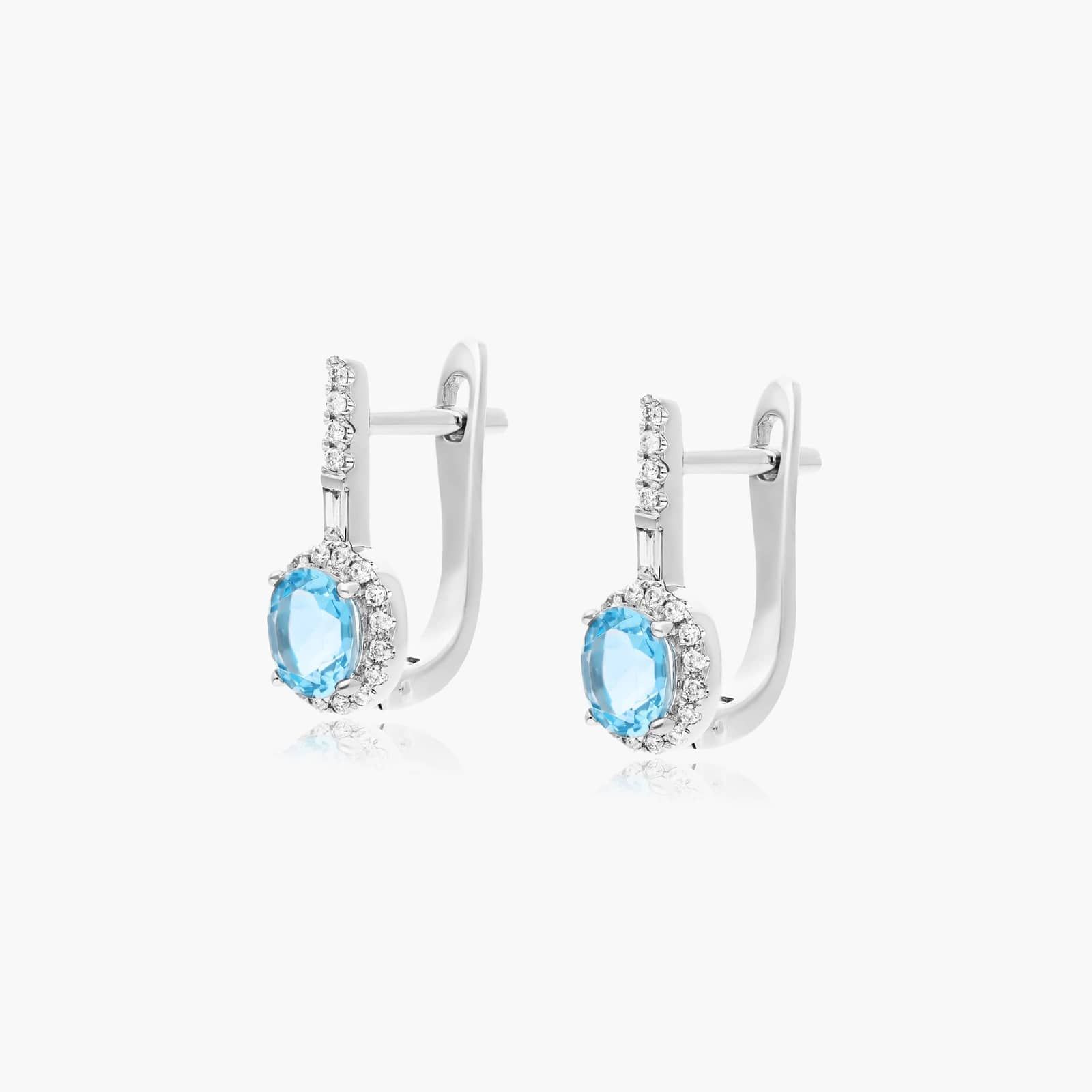
If appearance is what you’re after, either stone will do. It’s pretty much impossible to tell the two apart with the naked eye. If budget is your priority, choose blue topaz, but if you want a rarer, naturally colored blue stone and one that’s deemed more valuable, choose aquamarine.
Where to Buy Aquamarine and Blue Topaz
When choosing aquamarine jewelry, always purchase from a reputable and trustworthy vendor with very good after-sales policies. The vendor should disclose any treatments or enhancements that the stone has undergone.
1. James Allen
Renowned for its high-quality gemstones and jewelry, James Allen offers an impressive selection of aquamarine and blue topaz jewelry items. Their detailed imagery and 360-degree videos ensure that you know exactly what you’re purchasing. Check them out here.
2. Blue Nile
As one of the leading online jewelry retailers, Blue Nile boasts a diverse range of aquamarine pieces. Their streamlined website makes it easy to filter and find the perfect aquamarine jewelry, whether it’s for a gift or a personal treat. Browse their diverse collection here.
3. Etsy
A hub for artisans and vintage enthusiasts, Etsy offers a unique array of aquamarine pieces. From handcrafted jewelry by independent designers to vintage aquamarine treasures, the platform provides a streamlined shopping experience, emphasizing unique and personalized items. Check it out here.
4. Amazon
This e-commerce giant offers a broad range of aquamarine products, from loose gemstones to finished jewelry pieces. The platform’s vastness means you can find both artisanal and vintage aquamarine items. Check out their collection here.
To learn more about these retailers, check out our article on the top online retailers.
Wrapping Up
In the captivating world of gemstones, both aquamarine and blue topaz stand out with their enchanting blue hues. While aquamarine seduces with its serene oceanic tones and ancient maritime lore, blue topaz dazzles with its vibrant range and romantic affiliations. Their differences in hardness and care requirements further distinguish them, but at their core, both gems offer unparalleled beauty.


